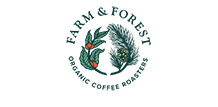Protecting Canada's endemic species
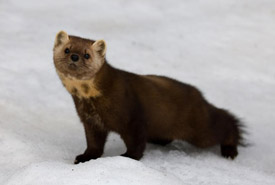
Newfoundland pine marten (Photo by Helen Jones)
Canada has thousands of species of conservation concern. Some are rare provincially, while others are at risk in the entire country or imperilled globally. Most have a range that extends beyond our borders and we share responsibility for their conservation with other countries. But there is a select group of species that occurs only in Canada, known as nationally endemic species.
To support the conservation of Canada’s endemic species, the Nature Conservancy of Canada (NCC) and NatureServe Canada have developed the first comprehensive report on this group of uniquely Canadian wildlife. The report highlights over 300 of Canada’s nationally endemic plants, animals and insects, and maps hot spots across the country where they can be found.
NCC is already helping to protect many of these, including the Gulf of St. Lawrence aster and Newfoundland marten. But more conservation efforts are needed to prevent their extinction. In addition to guiding NCC’s work, the report will be an important resource for other groups across Canada. Here are some of the endemic species from across the country.
British Columbia
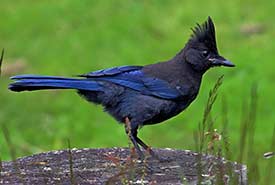
Steller's jay (Photo by chowan, iNaturalist)
Pacific Steller’s jay (carlottae subspecies)
The Steller’s jay, carlottae subspecies, is found only on Haida Gwaii, where many endemic species occur, because of its isolation and ice-free areas that remained during the last glaciation period. Sometimes called the Pacific Steller’s jay, this subspecies is larger and darker than the Steller’s jay found throughout western North America.
NCC has protected habitat that may be used by the Steller’s jay, carlottae subspecies, in the Kumdis River Conservation Area.
Alberta
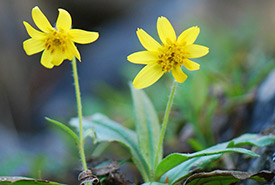
Lake Louise arnica (Photo by Tab Tannery, CC-BY-NC)
Lake Louise arnica
This globally imperilled yellow wildflower is found only in the Canadian Rockies of Alberta and BC. Also known as snow arnica, this species grows at high elevations on exposed alpine slopes and rockslides.
Castle-Crowsnest Watershed Natural Area
Saskatchewan
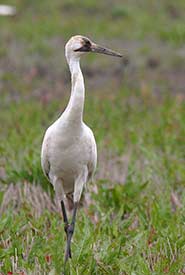
Whooping crane (Photo by Christian Artuso, iNaturalist)
Whooping crane
The endangered whooping crane was once down to about 20 birds. Thanks to captive breeding and habitat protection, there are now more than 600. There are continued efforts to establish breeding colonies in the U.S., but the only self-sustaining wild population nests in Wood Buffalo National Park.
Big Valley Complex (during migration only)
Manitoba
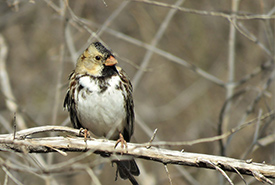
Harris's sparrow (Photo by Annika Lindqvist, CC-BY)
Harris's sparrow
This handsome sparrow is commonly seen at feeders in the U.S. during the winter, but it is the only songbird that exclusively breeds in Canada. Harris’s sparrow nests in open tundra near thickets. It has been declining in the past few decades possibly due to habitat loss and climate change.
Ellice-Archie Community Pasture, Fish Lake Drain Parklands (during migration only)
Ontario
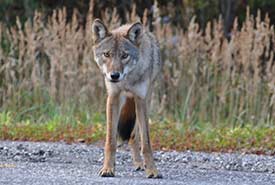
Eastern wolf (Photo by Rebecca Rogge, iNaturalist)
Eastern wolf
Thousands of people have heard its call at annual public wolf howls in Algonquin Provincial Park. The eastern wolf is a complicated species that hybridizes (crossbreeds) with both larger grey wolves and smaller eastern coyotes. It once ranged into the northeastern U.S., but the main population is now centred within Algonquin Park.
Loughborough Wilderness Block, Martha Webber
Quebec
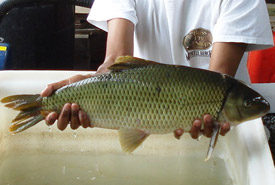
Copper redhorse (Photo by NCC)
Copper redhorse
Copper redhorse can be found only in the St. Lawrence River and its tributaries in Quebec. This large fish lives along the marshy edges of islands and spawns in the Richelieu River. It is threatened by water pollution, habitat loss and dams.
les du Fleuve Saint-Laurent, Richelieu-Yamaska
New Brunswick
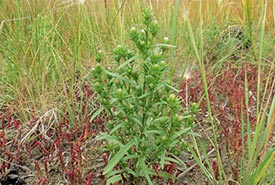
Gulf of St. Lawrence aster, Miscou Island, NB (Photo by NCC)
Gulf of St. Lawrence aster
The tiny annual plant lives only along the moist sandy shores and salt marshes of the Gulf of St. Lawrence and is restricted to just a few sites. Its numbers can vary greatly each year, depending on habitat conditions. It is threatened by coastal development and sea level rise.
Miscou Island
Nova Scotia
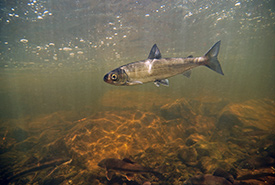
Atlantic whitefish (Photo by Bob Semple)
Atlantic whitefish
The global range of this critically endangered fish is now restricted to the Petite Rivière watershed. It once only entered fresh water to spawn and then lived in the sea, but these migrations have been cut off by dams. Invasive species threaten wild populations, and the Atlantic whitefish’s recovery will depend on captive breeding.
NCC has developed a freshwater conservation blueprint for the region that is supporting partner-led initiatives for the species’ recovery.
Prince Edward Island
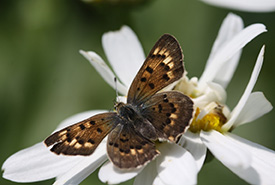
Salt marsh copper (Photo by Michel Larrivée, CC-BY-NC)
Salt marsh copper
Also known as maritime copper, this small butterfly occurs only in salt marshes along the Gulf of St. Lawrence coasts of Quebec, New Brunswick, Nova Scotia and PEI. It can be locally common, especially where sea lavender grows. Some of its habitat is threatened by coastal development and rising sea levels.
Percival River
Newfoundland and Labrador
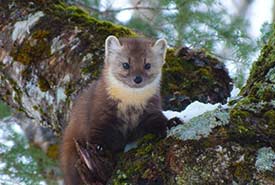
Newfoundland marten (Photo by Bailey Parsons, CC BY-SA 3.0)
American marten (Newfoundland population)
This unique subspecies of American marten lives only on the island of Newfoundland. It primarily eats small mammals, including snowshoe hare. Once listed as endangered, its numbers have increased thanks to habitat protection.
The Grasses
This story originally appeared in the Summer 2020 issue of the Nature Conservancy of Canada Magazine. To learn more about how you can receive the magazine, click here.

